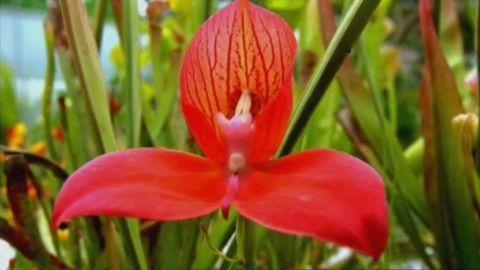Botany: A Blooming History • 2011 • 3 episodes • 2h:54m
Series which tells the story of how people came to understand the natural order of the plant world, and how the quest to discover how plants grow uncovered the secret to life on the planet.
What makes plants grow is a simple enough question, but the answer turns out to be one of the most complicated and fascinating stories in science and took over 300 years to unravel. Timothy Walker, director of the Oxford University Botanic Garden, reveals how the breakthroughs of Swedish botanist Carl Linnaeus, Chelsea gardener Phillip Miller and English naturalist John Ray created the science of botany. Between them these quirky, temperamental characters unlocked the mysteries of the plant kingdom and they began to glimpse a world where bigger, better and stronger plants could be created. Nurseryman Thomas Fairchild created the world's first artificial hybrid flower - an entirely new plant that didn't exist in nature. Today, botanists continue the search for new flowers, better crops and improved medicines to treat life-threatening diseases.
S1E1 • 2011 • Nature
The air we breathe, and all the food we eat, is created from water, sunlight, carbon dioxide and a few minerals. It sounds simple, but this process is one of the most fascinating and complicated in all of science, and without it there could be no life on earth. For centuries people believed that plants grew by eating soil. In the 17th century, pioneer botanists began to make the connection between the growth of a plant and the energy from the sun. They discovered how plants use water, sunlight and carbon dioxide to produce sugars - how, in fact, a plant grows. The process of photosynthesis is still at the heart of scientific research today, with universities across the world working hard to replicate in the lab what plants do with ruthless efficiency. Their goal is to produce a clean, limitless fuel and if they get it right it will change all our lives.
S1E2 • 2011 • Nature
For 10,000 years or more, humans created new plant varieties for food by trial and error and a touch of serendipity. Then 150 years ago, a new era began. Pioneer botanists unlocked the patterns found in different types of plants and opened the door to a new branch of science - plant genetics. They discovered what controlled the random colours of snapdragon petals and the strange colours found in wild maize. This was vital information. Some botanists even gave their lives to protect their collection of seeds. American wheat farmer Norman Borlaug was awarded the Nobel peace prize after he bred a new strain of wheat that lifted millions of people around the world out of starvation. Today, botanists believe advances in plant genetics hold the key to feeding the world's growing population.
S1E3 • 2011 • Nature


